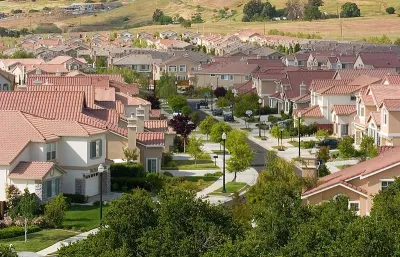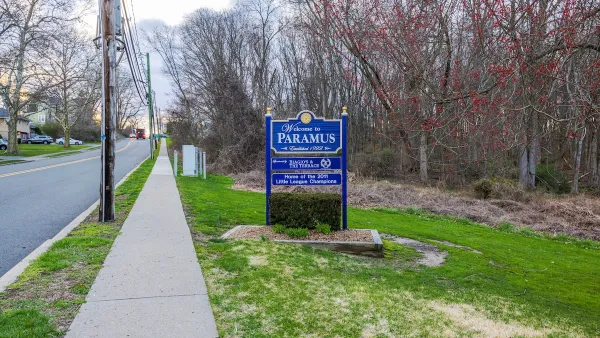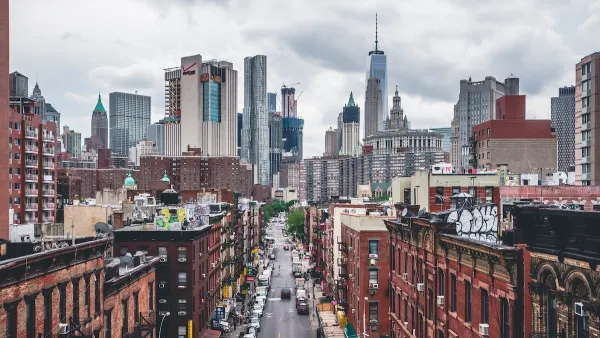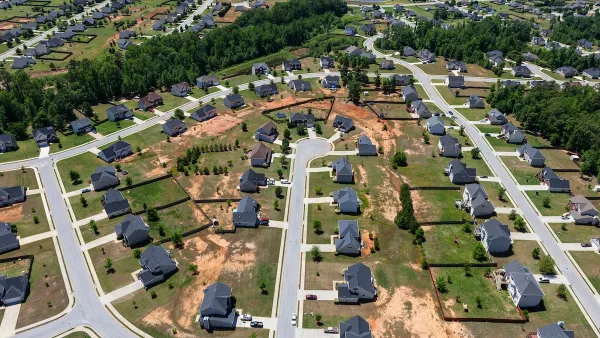The pandemic accelerated existing trends and created unsustainable housing demand in a wider range of towns and cities, exacerbated by outdated zoning restrictions.

The pandemic was predicted to reduce housing costs as people freed by remote work scattered to more affordable markets and reduced pressure on housing stock in hyper-expensive ‘superstar’ cities. But as M. Nolan Gray writes in The Atlantic, “In reality, two years later, housing costs in those superstar metros are at record highs, while the wave of pandemic-era migrations has helped spread the affordability crisis nationwide.”
According to Gray, “You don’t need to study economics to know that surging demand amid stagnant supply causes prices to rise. According to the Case-Shiller Index, nationwide home prices jumped by nearly 20 percent last year alone,” making even historically affordable towns out of reach for local residents.
For Gray, whose recent book, Arbitrary Lines: How Zoning Broke the American City and How to Fix It, highlights the ‘arbitrary constraints’ that keep American housing expensive such as parking requirements and multifamily housing bans, “If we want to contain the spread of high housing costs, these constraints have to go.” These restrictions don’t just affect major cities with already tight housing markets: “Duplexes and fourplexes are banned in 84 percent of residential neighborhoods in Charlotte. In Salt Lake City, minimum-parking mandates mean that apartments can’t be built without either towering garages or huge lots. In Austin, naysayers have successfully delayed a liberalizing zoning overhaul for a decade.”
With land becoming scarce in many cities, wildfires and flooding threatening the wildland-urban interface, and housing costs rising rapidly in more places, affordability is no longer an exclusively coastal concern.
FULL STORY: How California Exported Its Worst Problem to Texas

Analysis: Cybertruck Fatality Rate Far Exceeds That of Ford Pinto
The Tesla Cybertruck was recalled seven times last year.

National Parks Layoffs Will Cause Communities to Lose Billions
Thousands of essential park workers were laid off this week, just before the busy spring break season.

Retro-silient?: America’s First “Eco-burb,” The Woodlands Turns 50
A master-planned community north of Houston offers lessons on green infrastructure and resilient design, but falls short of its founder’s lofty affordability and walkability goals.

Test News Post 1
This is a summary

Analysis: Cybertruck Fatality Rate Far Exceeds That of Ford Pinto
The Tesla Cybertruck was recalled seven times last year.

Test News Headline 46
Test for the image on the front page.
Urban Design for Planners 1: Software Tools
This six-course series explores essential urban design concepts using open source software and equips planners with the tools they need to participate fully in the urban design process.
Planning for Universal Design
Learn the tools for implementing Universal Design in planning regulations.
EMC Planning Group, Inc.
Planetizen
Planetizen
Mpact (formerly Rail~Volution)
Great Falls Development Authority, Inc.
HUDs Office of Policy Development and Research
NYU Wagner Graduate School of Public Service




























